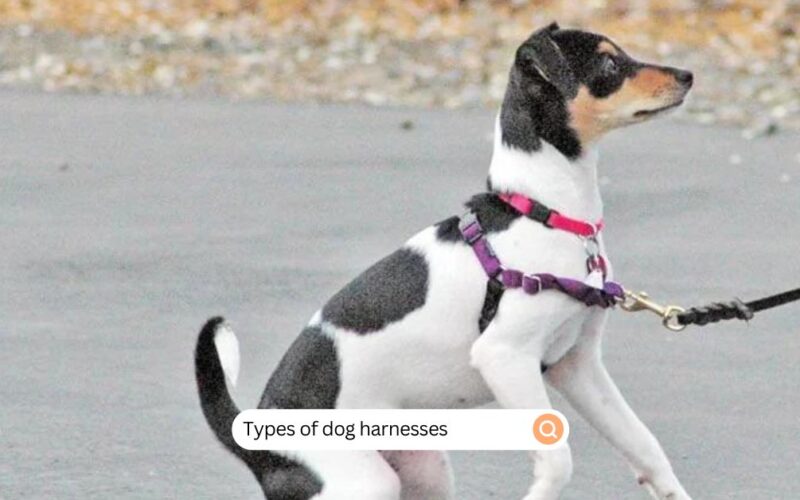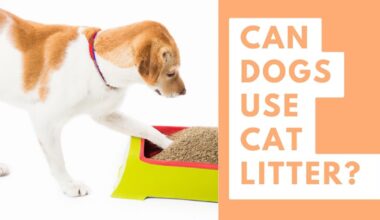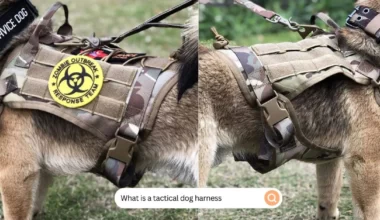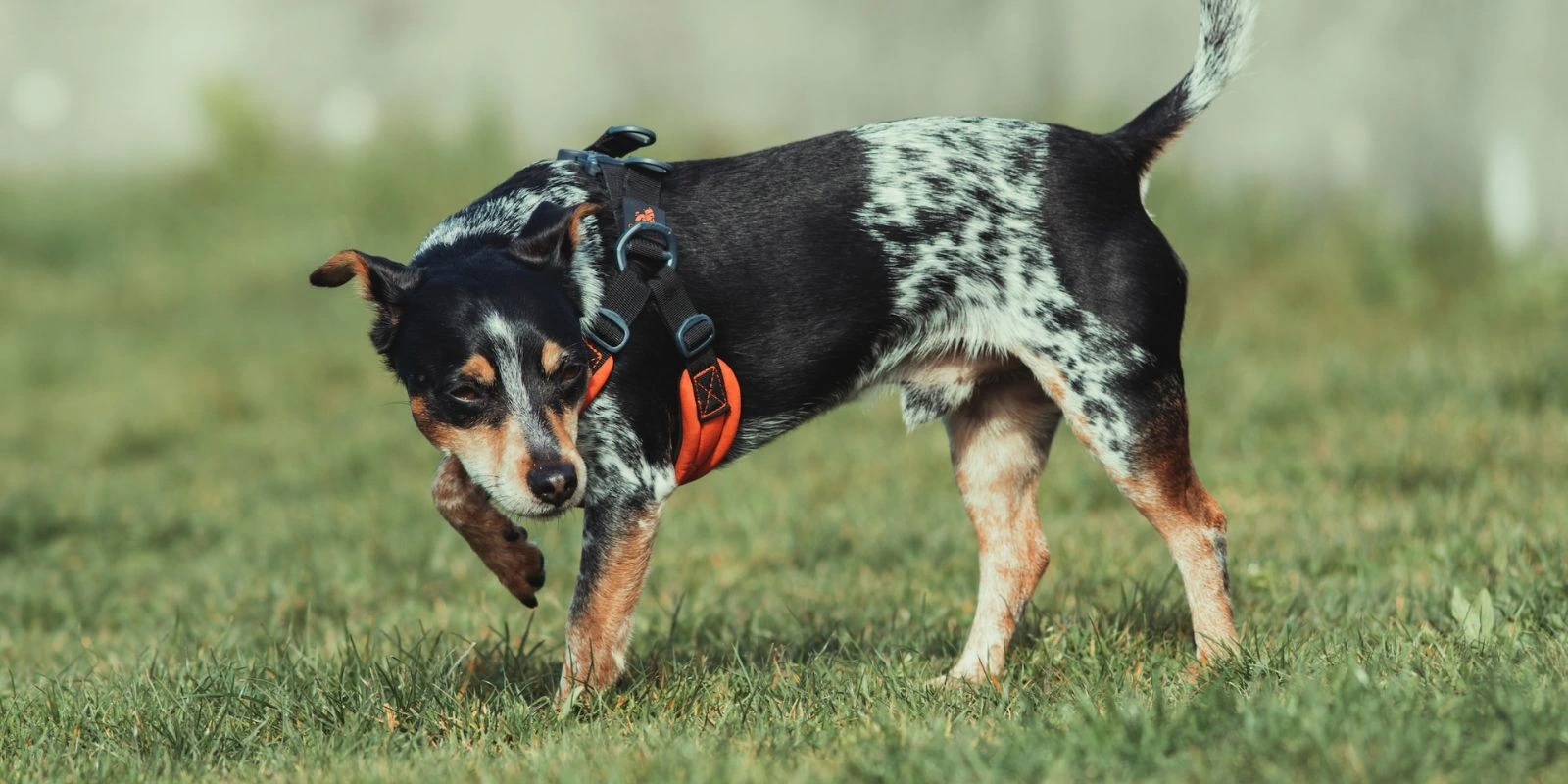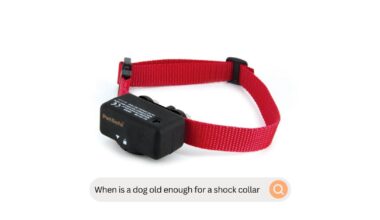About the Author: Nettie Finley, the Professional Dog Trainer at MyPetDoggie. Specializing in behavior rehabilitation, Nettie leads our team with her effective training techniques. As a certified canine behaviorist, she brings transformative change to challenging behavior cases. Her experience and expertise elevate our content, providing practical, insightful training advice for our readers. Also, she loves her Cavapoo!
One thing about dogs that is going to stay unchanged is their love for going on walks. For that, it’s important to stay geared up and always be ready to get going. It helps a bunch to have suitable equipment and the right harness is where you should start.
If you don’t know what a dog harness is, it is a dog accessory that you can use while walking your dog. They are designed to go around your dog’s body. It has straps that secure around the chest and the back.
While leashes are the most commonly used equipment for walking a dog, a dog harness helps distribute the pressure on the body from the leash more evenly across the body, which can be helpful if your dog tends to pull while on a walk or if you want to have more control over them outdoors.
There are different types of harnesses. Such as step-in harnesses, back-clip harnesses, dual-clip harnesses and front-clip harnesses, each with its benefits. It is important to consider and choose the right fit for your dog so they can feel their needs in it and feel comfortable while on walks.
Dogs love outdoor activities and there’s nothing better than getting them comfortable harness so they can enjoy to their fullest.
Some particular types of dog harnesses are ideal for some breeds such as bulldogs, whippets, pugs, and greyhounds. Harnesses also work great for dogs with psychological or health concerns.
There are so many types of dog harnesses and it can be difficult to find the perfect fit for your dogs but you are not alone! I have you covered with all the information you need to choose the right harness for your furry friend.
So, let’s dig in and understand how the know-how of the types of harnesses can help you select the perfect one for them.
Why Is It Important to Know the Type of Dog Harness?
Understanding the importance of being aware of the different types of dog harnesses is crucial for dog owners. By being aware of these types, you can make a well-evaluated decision and select the most suitable harness for your dog. Let’s get started and explore why this knowledge is valuable.
Firstly, knowing the types of dog harnesses allows you to make decisions about the harnesses according to your dog’s specific and individual needs. Each type has a different purpose and offers unique benefits.
For example, if your dog likes to pull on walks, a front clip harness can help teach them the right thing by directing their attention and discouraging pulling. On the other side, if your dog already has a good grip on leash manners, a back clip harness may help you have more control.
By understanding the differences, you can choose from different types of dog harnesses that go exactly with your dog’s behavior and walking style, ensuring a comfortable and enjoyable experience for both of you.
The knowledge of types of dog harnesses allows you to select a harness that provides the right level of control, support, and visibility ensuring the safety, security, and health of your pet. So, it’s worth it to spend some time getting familiar with all the options you have.
Dogs also tend to be close to their owners. Being a dog owner myself, I can assure you that their comfort and safety mean the world to us. It’s highly important to consider each type of dog harness or any accessory that I plan on getting because I need to make sure their comfort and safety are not overlooked.
While it’s difficult to find a detailed response on all the things you need to know about the types of harnesses, this article will help you in that matter for sure!
So, let’s dig into the types of dog harnesses you should know to select the best one for your furry friend.
Types of Dog Harnesses
The main types of harnesses for dogs are:
- Back-Clip Harness
- Front-Clip Harness
- No-Pull Harness
- Head Halter Harness
- Step-In Harness
- Vest Harness
- Escape-Proof Harness
- Hiking or Adventure Harness
- Car Safety Harness
- Service Dog Harness
- Fashion or Designer Harness
Back-Clip Harness:
A back-clip harness has a leash attachment on the back, providing more control, comfort, and stability for dogs with good leash manners. It distributes the pressure evenly across the chest, reducing strain on the neck. This type of harness is great for casual outings and regular walks, as it allows your dog to move easily.

The backclip harness comes with an easy-to-put-on and take-off option, making it convenient for everyday use. However, it may not be the greatest option for dogs that tend to pull on walks, as it does not provide as much control as all the other types of harnesses. Do keep your dog’s walking style and behavior in mind before opting for a back-clip harness.
Front-Clip Harness:
A front-clip harness has a leash attachment on the chest, helping redirect your dog’s attention and discouraging it from pulling. When dogs try to pull during walks, the front clip harness turns them to the other side, making it difficult for them to continue pulling.

Front clip harnesses are perfect for dogs who still need guidance and help in learning how to walk safely. It provides better control and highly reduces the risk of injury, as it does not put any pressure on the neck of the dog. However, bear in mind that it may take some time for your dog to get familiar with the feeling of the leash attachment to the chest.
No-Pull Harness:
A no-pull harness, as the name suggests, is specifically designed to discourage pulling behavior in dogs. It typically has a front clip attachment and some additional features such as a martingale-style chest strap or a tightening mechanism that discourages pulling gently.

The no-pull harness provides better control and redirects your dog’s attention, making walks more enjoyable for the dogs and owners. To ensure maximum effectiveness, properly adjust the harness and do not let it be too tight for your pet dog so they can feel their comfort and safety.
Head Halter Harness:
A head halter harness is designed to give you relatively more control over your dog’s head and muzzle. It also looks like a horse’s halter and fits over the dog’s snout, with the leash attachment being located under the chin.

The head halter harness works by giving your dog gentle guidance and redirecting their attention from pulling.
Step-In Harness:
A step-in harness is made to provide an easy way of putting it on and off. It has two leg holes and a strap that goes around the dog’s chest. To put it on, you simply have to make your dog step into the leg holes and secure the buckle on the back.

This type of harness is suggested for dogs who do not like wearing anything that goes over their heads.
Vest Harness:
A vest harness is a comfortable and secure choice for dogs. It has a vest-like design that distributes the pressure evenly across the chest and back. The straps usually have convenient buckles that are adjustable for a customized fit.

Vest harnesses are popular for really small or brachycephalic breeds as they provide better stability and prevent neck strain.
Escape-Proof Harness:
An escape-proof harness is made specifically to prevent dogs from slipping out. It has several other attachment points and additional security features or a martingale loop that tightens when the dog pulls.

These harnesses help manage dogs who have a tendency to back out of their harnesses or who are skilled at escaping.
Hiking or Adventure Harness:
A hiking or adventure harness is specially designed for outdoor activities and provides additional features for safety and convenience. They often have a handle on the back for lifting or controlling the weight.

These harnesses are great for hiking, camping, or any other outdoor activities with your dog.
Car Safety Harness:
As the name suggests, a car safety harness is used to protect and secure dogs during car rides. It usually has a sturdy construction with adjustable straps and a stable attachment point that can be connected to the seatbelt or the car’s *LATCH* system.

This type of harness helps in preventing your dog from moving around while they are in the car. They help in reducing distractions and keeping the dog in one place ensuring the safety of the dog and those in the car.
Service Dog Harness:
A service dog harness is specially designed to assist service dogs who perform jobs to aid individuals with disabilities. These harnesses usually have patches, handles, and D-rings for attaching all the necessary equipment.

Since they are made specifically for service dogs, it is ensured that they can easily perform their tasks effectively while maintaining their well-being.
Fashion or Designer Harness:
Fashion or designer harness is a stylish and trendy option for dog owners who want their furry friends to look fashionable. These harnesses come in a variety of designs, colors, and patterns. They allow you to express the dog’s personality and match their outfits. While fashionable harnesses look stylish, it is important to ensure that the harness is a perfect fit for the dog and does not compromise on their comfort.

Now that we talked about types of dog harnesses, you might be surprised to know that there are types of shapes in dog harnesses, and without having any info regarding the shape, you can get the wrong harness even if you selected the right type.
You might be interested in: Understand the reasons why your dog may dislike wearing a harness and how to address it.
Types of Dog Harness Shapes
There are various types of harness shapes but the most popular are H-Shape Harness and Y-Shape Harness.

H-Shape Harness:
As the name suggests, it has the shape of H when viewed from the back. It normally has two attachment points, one located at the back and another on the chest side. Both of these attachment points are used for different purposes.
The back point is used for regular walks while the chest attachment is used when the dog is prone to pulling.
The H-shape harness provides comfortable control on the dog as it evenly distributes the pressure between the chest and shoulders of the dog’s body, making it a comfortable option for the dogs and their owners.
Y-Shape Harness:
As the name suggests, this harness is Y-shaped when viewed from the back. It also has two attachment points, with one located on the back and the other on the chest. The Y-shape harness is known for its ability to distribute the pressure more evenly across the chest and shoulders, reducing strain on the neck.
This can especially be beneficial for dogs with respiratory issues or who tend to pull. The Y-shape design provides a greater range of motion and provides a comfortable fit for many dogs.
Both the H-shape and Y-shape harnesses have their specific benefits, and the decision between them depends on your dog’s specific needs and preferences. Some dogs may feel more comfortable and secure in one Y-shaped harness rather than the H-shaped one.
It’s important to consider factors such as your dog’s size, breed, and behavior when selecting a harness shape because it plays an integral part in your dog’s ability to enjoy their walks.
Once you have selected the best fit for your dog, it’s important to know how to use it properly. Now, let’s start with the steps you need to follow to use a dog harness effectively.
You might be interested in: Find out the best practices for washing dog harnesses to keep your pet comfortable.
How to Use Dog Harness Properly
Using a dog harness is an awesome way to provide comfort and control while walking your pet dog.

If you have newly bought a harness for your dog, there are a few crucial steps you need to know to use it effectively. Here’s a step-by-step guide on how to use a dog harness:
1. Choose the right harness:
There are a lot of types of harnesses available, such as H-shape, Y-shape, step-in, vest, and padded harnesses. You need to especially consider your dog’s size, breed, and specific wants when you are selecting a harness for them to ensure it perfectly fits them and their behavior.
2. Adjust the fit:
Ensure the harness is properly secured to give your dog a secure and comfortable fit. Loosen the straps and place the harness over your dog’s head, with the chest strap resting on their chest. Then, adjust the straps to fit nicely, but not too tight, allowing a gap of a couple of fingers to fit between the harness and your dog’s body. This way you will make sure that your dog feels comfortable in his or her harness.
3. Attach the leash:
Look for it and you will notice an attachment point on the harness. Locate that attachment point on the harness, usually located on the back or chest. Attach the leash to the designated ring. Use the back attachment point if you want it to be suitable for regular walks, but if your dog tends to pull, go with a chest attachment point.
4. Practice:
It’s important to let your dog get used to their new accessory. Allow your dog to get used to wearing the harness by giving them time to fully adjust it. Start with short walks and gradually increase the duration. If you do not see them getting irritated or uncomfortable, keep increasing the walk duration and reward your dog with treats and love to help them create a positive association with the harness.
5. Maintain and clean the harness:
Anything that your dog wears needs to be cleaned from time to time. Especially dogs, their love for stinky smells and mud makes things dirty so it’s important to regularly inspect the harness for any signs of wear or damage.
Follow the instructions mentioned on the harness for cleaning based on the primary material of the harness. For cotton and polyester harnesses, you can machine wash on a gentle cycle or hand wash with mild detergent.
For a webbing harness, hand wash with mild soap and water. Reflective harnesses should be cleaned thoroughly following the washing instructions based on the primary material. Padded harnesses require careful and thorough cleaning, considering that they can easily get damaged.
So, now that you are fully aware of how to use it, keeping it clean is also highly recommended. It is important to know how to keep your dog’s harness clean and below are the ways you can ensure that.
How To Clean Dog Harness Properly
Just like our bodies, dogs also tend to produce natural oils and body odors that can make their belongings smell stinky over time. Harnesses are just one of the accessories that need regular cleaning. Well, luckily, washing dog accessories like harnesses is not a difficult task. You can easily get rid of the unwanted smells and clean them with the easy tips you will find in the article below.

It is also important to note that there are different kinds of materials that the harnesses are made of and it is suggested to wash them with different methods just as they are mentioned in their descriptions but generally, you can hand wash or use a washing machine with a mild detergent.
Remember, by keeping your dog’s harness clean, you ensure your dog’s comfort and prevent any potential skin irritation or problems.
To maintain the hygiene and durability of a harness, you need to make sure it stays clean. Here is a guide to cleaning dog harnesses made of different kinds of stuff.
- Cotton and Polyester Harnesses: For these harnesses, you can either go for machine washing them on a gentle cycle using a mild detergent or hand wash them. If you are machine washing, place the harness in a mesh laundry bag to protect it from damage. After washing, air dry the harness away from direct sunlight.
- Webbing Harnesses: To clean a webbing harness properly, it’s suggested to hand wash it with mild soap and water. Focus on any stains or spoiled areas and gently scrub them. Then, rinse thoroughly to remove any soap residue. After that, air-dry the harness completely.
- Reflective Harnesses: The method of cleaning a reflective harness is based on the primary material of the harness. Consider following the washing instructions provided by the company based on the material. This will ensure that the reflective properties of the harness are not damaged during the process of cleaning.
- Padded Harnesses: Cleaning a padded harness requires extra care. Start by spot-cleaning any stains or areas where you see dirt using a mild detergent or pet-safe stain remover. Use a soft brush or cloth to rub the affected spot then carry on with cleaning the whole harness. When you are done, rinse it thoroughly and make sure there is no soap residue left behind. Lastly, air dry the harness to use it again.
Also, note that it is highly recommended and important to follow the manufacturer’s instructions and specific guidelines to wash a specific harness. To avoid any damage to it, you should make sure you are cleaning it according to the instructions given.
What is the Purpose of a Dog Harness?
A dog harness is an equipment used mainly for walking dogs but it also serves many other purposes. Such as controlling your dog and teaching them walking manners, a secure and comfortable way to control and handle your dog during walks or other activities and it helps in distributing pressure among the dog’s chest and shoulders to prevent neck injuries.
Using a neck harness helps prevent pulling and allows better control, especially for dogs who are physically strong or have respiratory issues. In addition to that, harnesses can also be used to attach certain accessories to it such as the name of the dog or other attachments. Overall, a dog harness promotes safety, comfort, and better control during walks and other outings.
How Does a Dog Harness Work?
A dog harness works by providing a safe and comfortable way to control and handle your dog during walks. It’s important to have control over your dog when you go and just like leashes, harnesses are a type of equipment used to control dogs when you take them outside.

However, as I have mentioned above, harnesses are different from leashes. They typically consist of straps and loops that go around your dog’s chest and shoulders, distributing pressure evenly across these areas. This helps prevent strain on the dog’s neck and throat, which can occur with traditional collars.
The harness has attachment points for leashes. You attach the leash to a D-ring or attachment point on the harness to have control over your dog and prevent it from pulling or escaping. Overall, a harness gives you a comfortable variable to control your dog and reduce the risk of injuries that are common with the use of collars.
Does My Dog Need A Harness?
Whether your dog needs a harness or not depends on your dog’s needs and your preferences. A harness can be beneficial for dogs that tend to pull, have respiratory issues, or need better control during walks. It provides a secure and comfortable way to handle them. However, if your dog walks well on a leash with a collar and you feel like they know their walking manners, a harness may not be necessary. Ultimately, it is up to you to decide what works best for your dog and their walking style.
SOME RELATED QUESTIONS:
What is a 1-point harness?
A 1-point harness is a simple harness that has only one attachment point which is usually located at the back of it. It is made for dogs who are gentle on walks and do not need to get out of control.
It can also be used by dogs who know their walking manners, but it’s best to take precautions and get a stronger harness if you have a big dog. An 11-point harness is not suitable for dogs who tend to pull on walks or need more control.
Why are Y-shaped harnesses better?
The main purpose of a harness is to distribute the pressure on the dog’s body when it pulls or tries to get out of control. A Y-shaped harness is better because it distributes pressure more evenly across the chest and shoulders, keeping the neck of the dog safe from potential injuries.
The Y shape provides better comfort and safety for the dog as it also has a wide range of motion and reduces the risk of chafing or rubbing. It is also the best option for dogs with respiratory issues.
Do vets recommend collars or harnesses?
Vets mostly suggest harnesses over collars because they are the healthier and safer option. Harnesses have the best property of protecting the dog from feeling pressure only at one point as it can cause many health problems.
Harness evenly distributes the pressure in the dog’s body and it is used for dogs who are prone to pulling while on walks to protect their neck from any potential injuries. However, it is always best to consult a veterinarian and ask them what is the better option for your dog. They will suggest the best fit considering the size, breed, and age of your dog.
Is a harness more comfortable than a collar?
Yes, a harness is generally considered more comfortable than a collar for dogs. Harnesses distribute the pressure more evenly across the body, reducing strain on the neck and throat.
This is beneficial for dogs with respiratory problems or those who are prone to pulling while on walks. Harnesses are also a popular choice for dog owners because they have a reduced risk of injuries as compared to collars in dogs.
Why not use a harness?
While there are many benefits of using harnesses to control your dog, harnesses can be uncomfortable and restrictive to dogs. Especially if they are newly introduced to one.
Some harnesses also encourage pulling while on walks such as the back-clip harness and it is recommended to consult a professional to help you decide the right fit for your dog. Remember that each dog has their individual needs and they should be properly taken care of.
How long can a dog wear a harness?
Dogs can safely wear harnesses for several hours at a time but it is important to give them breaks and make sure there are no signs of irritation or discomfort. The exact time period that the harness can stay on depends on factors such as the dog’s breed, activity level, and the type of harness being used.
Generally, it is suggested to remove it when they are going to sleep to give their skin a chance to breathe and feel fresh air. If you have any specific questions about the time your dog can wear a harness, you should consult a vet.
Wrapping Up
There are so many types of dog harnesses. It can be a time-consuming task to choose the best one for your dog but it is highly important. Dogs love going out for walks. Hence having proper equipment to help them stay safe and have their comfort is an essential part.
There are harnesses for almost everything. You will see a harness for car rides, styling, hiking, and service tasks, escape-proof, no pull, front clip, back clip, and head halter. Since there are loads of options, it’s suggested to consult a veterinarian and ask them about the perfect fit for your pet dog.
Harnesses are essential to make your dog learn walking manners and stay safe from any potential injuries. They help in distributing the pressure among the chest and shoulders or back of the dog to ensure that there is no chance for neck strains.
